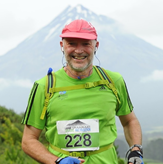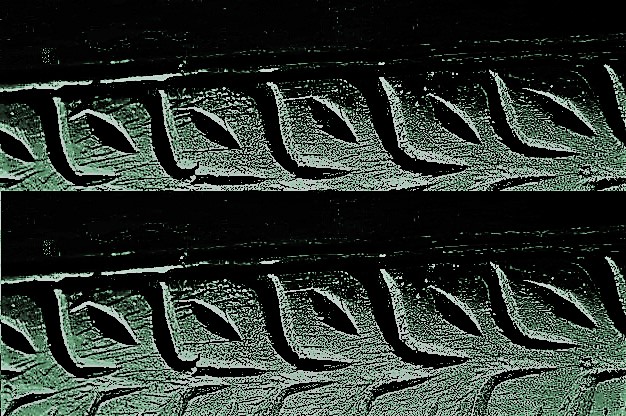Dr Martyn Reynolds, Victoria University
Relationships. We all have them. Enjoyable productive relationships keep me in teaching. They are the spice of classroom life. However, is it safe to assume that the English word ‘relationship’ is adequate to capture the ideas held by an increasingly diverse student population on the subject of how we should be together in education? This blog addresses the question of how we might think about student-teacher relationships in Pasifika education – that is, the education of students with links to the Pacific who reside in Aotearoa New Zealand.
One of the stock phrases of New Zealand education in recent years has been along the lines of ‘relationships matter … particularly in Maori and Pasifika education’. I remember being irritated by advice some time ago regarding talking to my Pasifika students about sport as a way to build relationships. Firstly, I happen to work in an all-boys school, and if you don’t talk to most of your students about sport in a boys’ school, what else is there to start the week with except the weather? Secondly, if sorting out Pasifika education were that easy, the relevant parts of the Ministry of Education, NZQA, and so on would be out of their jobs by now. No, I wasn’t satisfied. Teachers are about action, and so I set out to see what we could do beyond just ‘having a chat’.
Attempt 1: Using videos to build connections
Firstly, I asked Year 8 male Pasifika students aged about 13 years to make videos of themselves before they came to our all-boys’ school as Year 9s. A one minute video to tell teachers you don’t yet know what you think they should know about you. Watching these videos, teachers reacted to their future students in three ways.
- In some cases, teachers saw an opportunity to bring students into lessons through details in their lives. Aspects such as church or family that were mentioned in the videos could be incorporated into future teaching.
- In other cases, teachers saw valuable qualities in individual students. Leadership, for instance, was detected through voice, deportment and through the stories the boys had to tell in their videos. Teachers later could (and did) use their prior-knowledge of students’ positive qualities in the fabric of pedagogy.
- In addition, some teachers personally warmed to the videoed guys, enjoyed them as people, and stated a desire to teach those individuals who, by their words and actions, had distinguished themselves from the stereotype, even when talking about stereotypical things.
I thought these outcomes of the video productions were good, but not good enough. Better than a chat about the game, but not a game-changer. There was certainly lots of potential for these videos to shift how these particular boys might be received when they arrived at our school as full-time students. All of it positive. But we teachers hadn’t shifted our ideas about relationships at all. We had been listening to these Pasifika boys with our own ‘ears’. We hadn’t learned to learn about ourselves, to reveal and therefore change our understandings. I like learning. It’s another thing which keeps me in teaching. So I pushed on.
Attempt 2: Exploring the concept of va
How are relationships understood and enacted in the Pacific? One answer is through the concept of va. Va, which has related forms in Tonga, Samoa and elsewhere, tells us to think of relationships not as point-to-point lines of connection but as relational spaces. Where I might say I have no relationship with someone, va tells me I do, inevitably. We are connected to everyone and everything through creation. There’s no choice. And, further, relationships in the physical world are matched in other dimensions, such as the spiritual.
So what? So when a Pasifika student socialised into this connected world walks into my space, we are already connected. If I do nothing, I am trampling the connecting space. The ethic of care which comes with va tells me that such Pasifika students expect me to honour my obligations as a teacher – to teach my subject and to support the dignity and humanity of my charges at one and the same time. That’s not a part of my personality, it’s an obligation of the situation. The literature has told the story of Pasifika students’ expectations over the years (for example, see here, here and here), but seldom through the concept of va.
A fantastic group of teachers learned with me about va. We had access to the literature (for example, see here and here) and members of the community, and began to think the concept and the ethics through in our own contexts. Meanwhile, wearing my researcher’s hat, I was asking Pasifika parents and new Pasifika students what they thought teachers should know about teachers, teaching, learning, and Pasifika people. What did they want to say to us?
Putting va and this voice together, we tried to understand how to carry out our obligations of care by listening to the community’s ideas through our best ‘Pacific ear’. In effect, we tried to hear students and parents in their own terms, informed by our growing understanding of Pacific concepts such as va. We then went back to class, practiced, observed each other, watched the reactions and participation of our students, and finally made a video each that captured our learning. This was a gift to the parents in exchange for their knowledge, to honour their trust and to show the effect of their teaching of us. It was also a statement of our accountability going forward.
Reflections on videos and va
If teachers’ reactions to the original student videos were constructive, teachers’ replies in their own videos were re-constructive. Our learning had included re-thinking power in the classroom, the deliberate use of inclusive language, different ways of using time to afford more one-on-ones, and so on – all contextualised ways of shaping care for classroom relational spaces. In addition, an undercurrent through the teacher videos spoke of the strength of va as a conceptual tool to deflect other commonly held ideas about how to be when in the role of a teacher. You can imagine those and the way they might sit with a relational world view which utilises a va lens.
If we take ako – the Māori concept of reciprocal teaching and learning – seriously, there’s a wealth of knowledge in Pacific wisdom which can be of benefit to all who are involved in Pasifika education – students, teachers and parents. Perhaps we in the engine of things, teachers, administrators and policy makers, need to move towards developing ‘conceptual bilingualism’ – that is, a fluency with two (or more) sets of cultural and conceptual understandings – starting with understanding relationships through va. Living in two worlds is, after all, the situation of many of our Pasifika students. Let’s make it our strength too.
 Martyn Reynolds has been teaching for a long time! He has taught in Papua New Guinea, Tonga, England, and now works in Aotearoa New Zealand. He has recently completed his PhD in Pasifika education through Victoria University of Wellington.
Martyn Reynolds has been teaching for a long time! He has taught in Papua New Guinea, Tonga, England, and now works in Aotearoa New Zealand. He has recently completed his PhD in Pasifika education through Victoria University of Wellington.


[…] sense of indigenous Pacific research, opening the door to a productive way forward for my PhD on Pasifika success as Pasifika in education in Aotearoa. But then came the confusion. Some researchers seemed to be using the same […]
LikeLike
[…] am still learning the art of relationship-building with Pacific people but I have come to appreciate how listening can help engender trust and commitment. This […]
LikeLike
[…] with Pacific families is for teachers to understand how these can develop in a way that accord with Pacific values. An issue that I see with the school system is that, in the pursuit of achieving outcomes, space […]
LikeLike
[…] aspects – the dynamic that exists between people in the space, captured beautifully in the Pacific concept of vā. Te Whāriki, New Zealand’s early childhood curriculum, challenges educators to ensure that […]
LikeLike